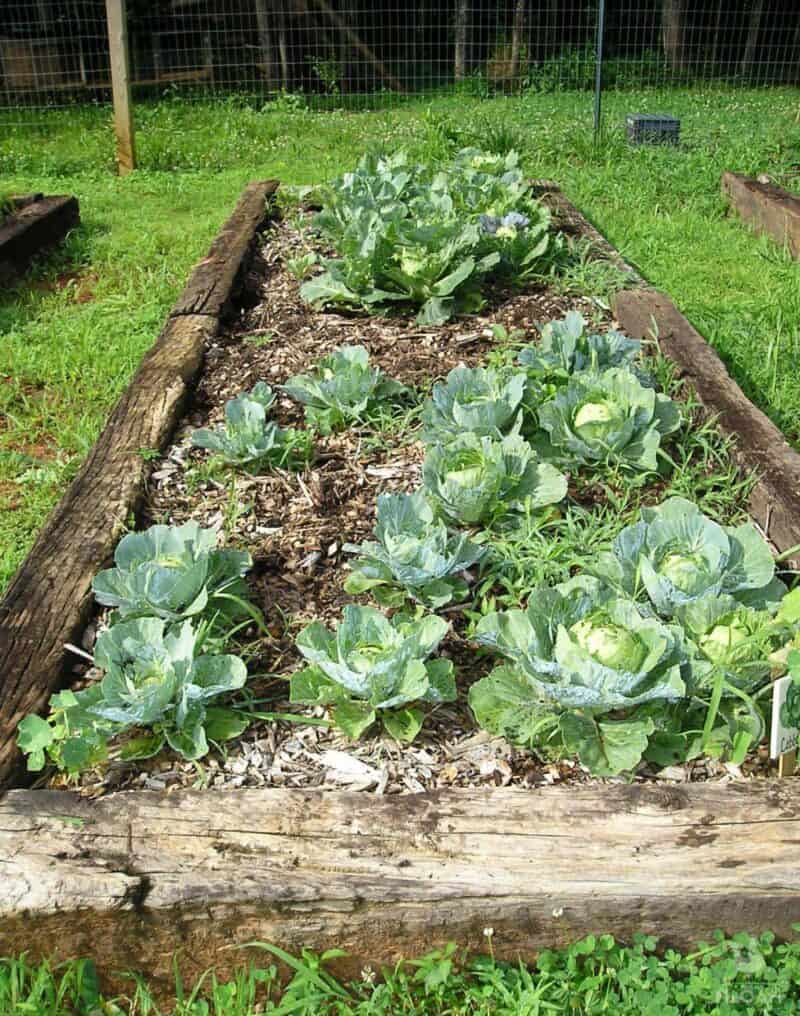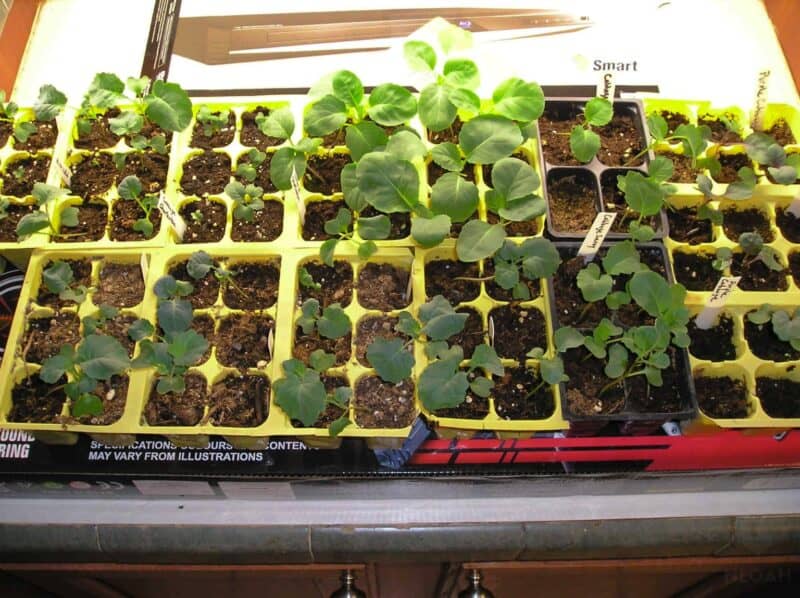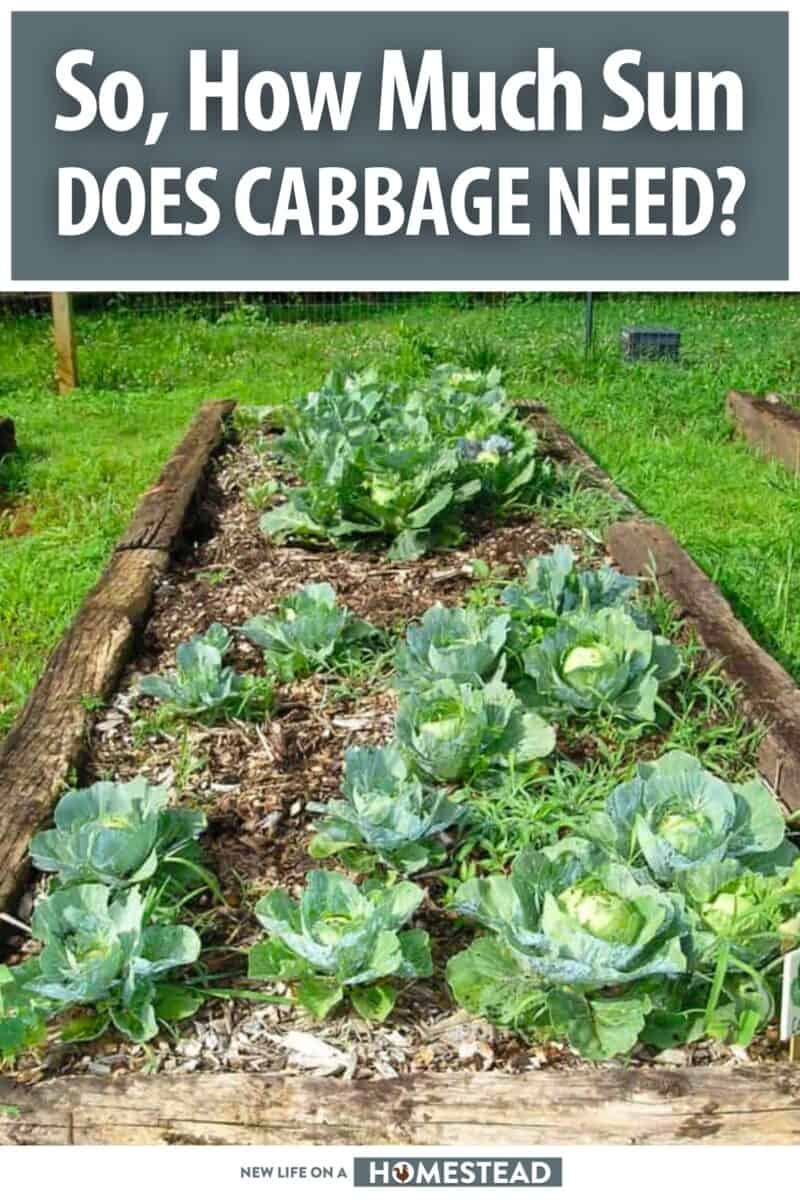Cabbage is a cool-season crop that does best in full sun but can tolerate some shade, especially during the hot summer months. So, how much sun does cabbage need?

Cabbage needs at least 6 hours of sunlight a day, but it can tolerate up to 8 hours of sunlight. If you live in an area with long days during the summer, you can grow cabbage in partial shade. Cabbage will do best in an area that has full sun in the morning and partial shade in the afternoon.
Ready to learn more about the sun requirements of cabbage – at all its stages and sizes? Let’s take a closer look!
How Much Sun Does Cabbage Require?
How much sun your cabbage needs will vary depending on its stage of growth. Let’s take a closer look.
Seeds
Cabbage seeds need direct sunlight in order to germinate and grow into healthy seedlings. If they do not receive enough sunlight, they will not sprout at all.
Seedlings
Once the seedlings have sprouted, they can be moved to a location with filtered or indirect sunlight.
It is important to note, though, that if seedlings do not receive enough sunlight, they will become leggy and weak.
Fresh Transplants
Fresh transplants should be hardened off before being planted in the garden. This means that they should be slowly acclimated to outdoor conditions by being placed in a protected area with indirect sunlight for a few hours each day.
Once they have been hardened off, they can be planted in the garden and will do best in a location with full sun. However, they will also tolerate partial sun.
Mature Plants
Mature cabbage plants do best in full sun but will also tolerate partial sun. If they do not receive enough sunlight, they will produce smaller heads of cabbage that may be pale in color.
Does Cabbage Need Full Sun?
Cabbage needs full sun to perform well, but it will tolerate partial shade in hot weather. If you live in an area with extreme temperatures, you may want to consider planting cabbage in a greenhouse or raised bed.
This will help to regulate the temperature and give the plants the cool, moist conditions they need to thrive.
The ideal temperature for growing cabbage is between 60 and 70 degrees Fahrenheit. In hot weather, cabbage will bolt—that is, it will go to seed prematurely.
How Many Hours of Sun Does Cabbage Need?
Cabbage is a cool weather crop that does best in full sun, but how much sun cabbage needs depends on the type of cabbage you are growing.
For instance, early varieties like “Early Jersey Wakefield” need about 6 hours of sun per day, while late varieties like “January King” need at least 8 hours.
It’s important to know how much sun your cabbage needs so that you can give it the best chance to thrive.
Here’s a breakdown of how much sun different types of cabbage need:
- Savoy cabbage needs at least six hours of sun per day.
- Napa cabbage needs six to eight hours of sun per day.
- Red cabbage needs at least six hours of sun per day.
- Green cabbage needs at least eight hours of sun per day.
As you can see, there is some variation in how much sun different types of cabbage need. However, all types of cabbage need at least some amount of sunlight in order to grow and thrive.
If you’re not sure how much sun your particular type of cabbage needs, err on the side of giving it more rather than less. Too much sun is better than not enough!
Can Cabbage Grow in Indirect Sunlight?
Cabbage is a cool-weather crop that does best in full sun but can also tolerate partial shade.
If you live in an area with hot summers, however, you’ll want to make sure your cabbage gets some relief from the afternoon sun.
One way to do this is to plant it next to taller plants that will provide some natural shade. Another is to use a light-colored fabric summer weight row cover to diffuse the heat and light.
Either way, your cabbage will be happy and healthy!
Does Cabbage Prefer Morning or Afternoon Sun?
Cabbage is a cool-weather crop that does best in full sun. However, if you live in an area with very hot summers, it’s best to plant cabbage in a spot that gets some relief from the afternoon sun.
If you’re not sure whether your location receives enough sunlight, you can test the soil temperature with a digital thermometer. The ideal soil temperature for cabbage is between 60 and 65 degrees Fahrenheit.
In general, plants need around six hours of sunlight per day to thrive. If you’re unsure how much sunlight your cabbage is getting, you can use a light meter to measure the intensity of the light in the area where your plants are located.

Transitioning Cabbage From Indoors to Sunlight
If you have been growing cabbage indoors, you may be wondering how to transition it to sunlight. The process is actually quite simple and does not require much time or effort.
Start by acclimating your cabbage to outdoor conditions gradually. For the first week, put your plants outside for only an hour or two each day, increasing the amount of time they spend outdoors each day until they are able to stay out all day.
Once your cabbage is acclimated to outdoor conditions, it is time to transplant them into the garden. Choose a spot in your garden that receives full sun for at least six hours each day.
Prepare the soil by tilling it and adding compost or manure. Cabbage prefers soil that is high in organic matter.
Plant your cabbage transplants 18 inches apart in rows that are three feet apart. Water them deeply after planting.
Mulch around your plants to help retain moisture and control weeds. Be sure to pull any weeds that do appear promptly so they don’t compete with your cabbage for nutrients and water.
What Happens If Cabbage Doesn’t Get Enough Sun
During the peak of the growing season, cabbage should receive at least six hours of direct sunlight per day.
If it doesn’t get enough sun, the leaves will become pale and the heads will be small. In extreme cases, the plant may bolt (go to seed) if it doesn’t get enough sunlight.
What if It Gets Too Much Sun? What Happens Then?
While too little sunlight is a problem for cabbage plants, too much sun can also be detrimental. If cabbage leaves are exposed to too much sunlight, they will develop large yellow patches.
This is called “leaf scorch,” and it significantly reduces the overall quality of the head of cabbage.
To avoid leaf scorch, make sure to water your cabbage plants regularly. The soil should stay moist but not soggy. Mulching around the plants will also help retain moisture and protect the leaves from direct sunlight.
Now that you know how and where to grow cabbage, the rest is up to you! By giving your cabbage plants the right amount of sun, they’ll produce plenty of healthy heads for you to enjoy.


Rebekah is a high-school English teacher n New York, where she lives on a 22 acre homestead. She raises and grows chickens, bees, and veggies such as zucchini (among other things).
